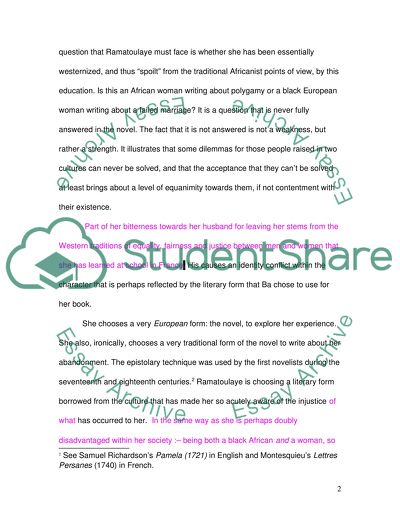Cite this document
(“So Long a Letter: an epistolary portrayal of social conflict in Essay - 1”, n.d.)
Retrieved from https://studentshare.org/literature/1507404-so-long-a-letter-an-epistolary-portrayal-of-social-conflict-in-post-colonial-africa
Retrieved from https://studentshare.org/literature/1507404-so-long-a-letter-an-epistolary-portrayal-of-social-conflict-in-post-colonial-africa
(So Long a Letter: An Epistolary Portrayal of Social Conflict in Essay - 1)
https://studentshare.org/literature/1507404-so-long-a-letter-an-epistolary-portrayal-of-social-conflict-in-post-colonial-africa.
https://studentshare.org/literature/1507404-so-long-a-letter-an-epistolary-portrayal-of-social-conflict-in-post-colonial-africa.
“So Long a Letter: An Epistolary Portrayal of Social Conflict in Essay - 1”, n.d. https://studentshare.org/literature/1507404-so-long-a-letter-an-epistolary-portrayal-of-social-conflict-in-post-colonial-africa.


